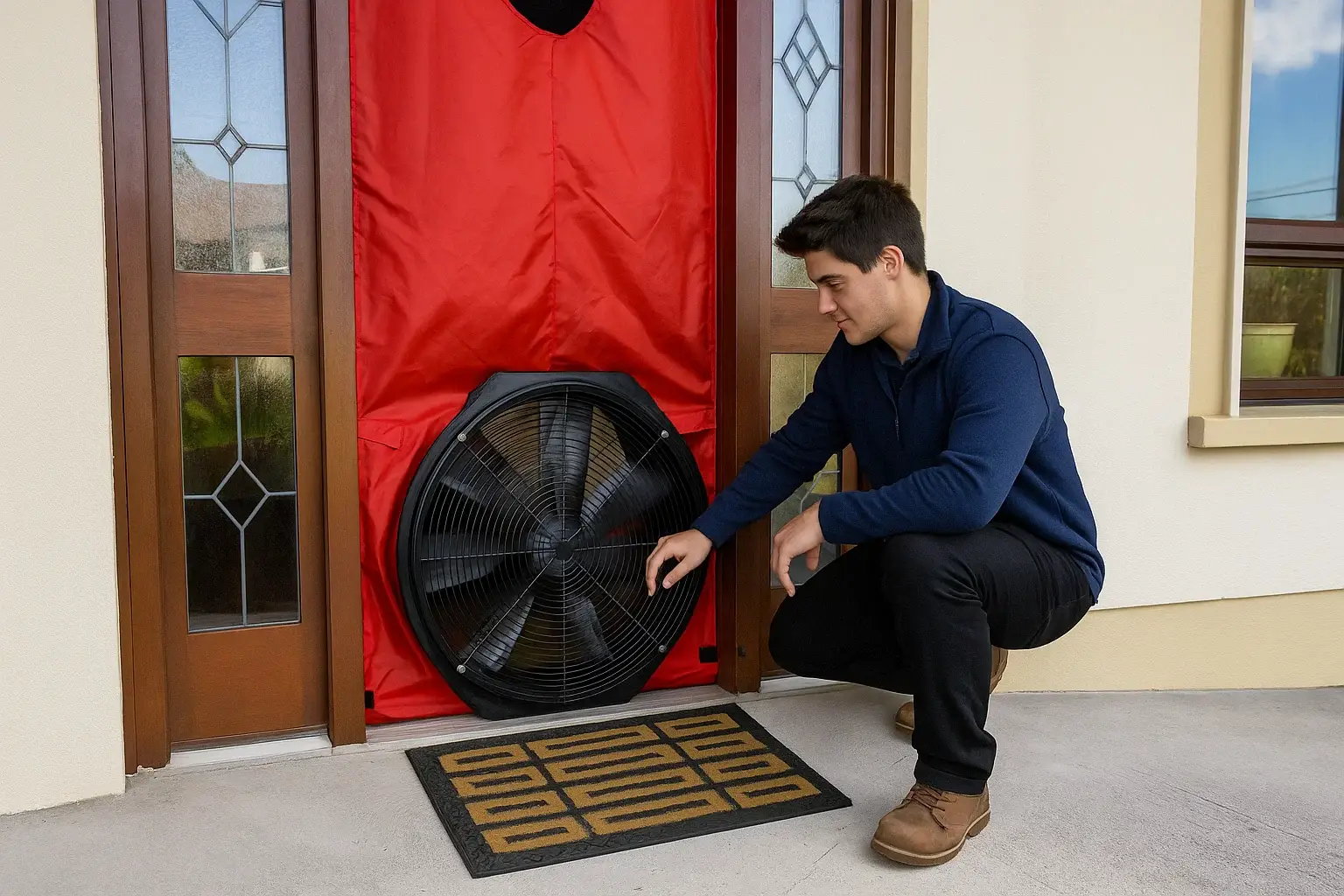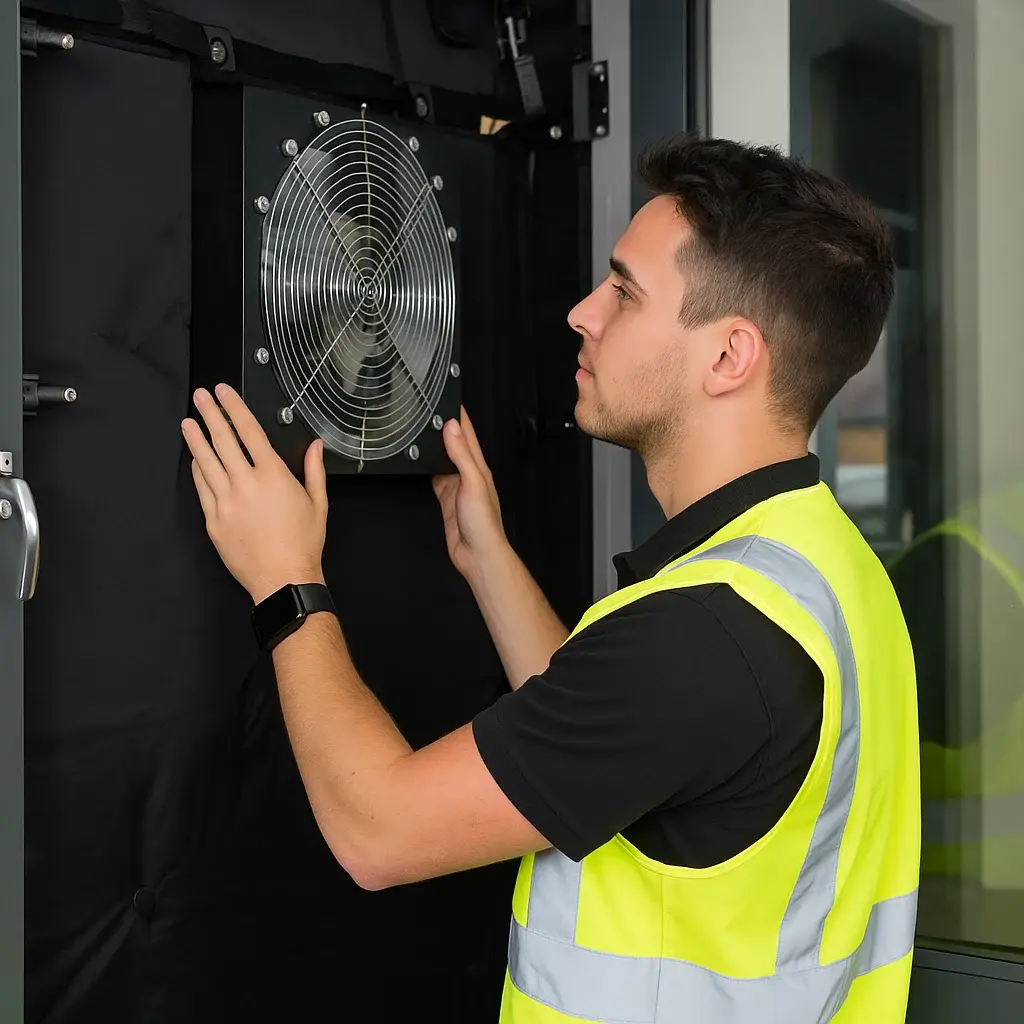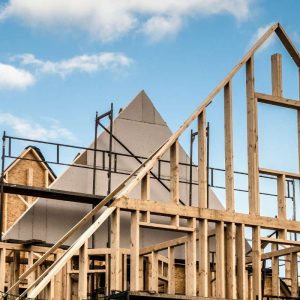Why Air Tightness Testing Shows the True Quality of Building Construction
Energy use, comfort, and long-term durability all begin with construction quality. One of the strongest ways to prove the quality of a newly built or refurbished building is through air tightness testing. Over time, this relatively simple test has become one of the most reliable checks on whether a property has been built to modern standards.
The growing focus on environmental responsibility and energy saving is placing airtight design at the centre of good building practice. Regulations are getting tighter, both nationwide and locally. In areas like West Yorkshire, where regeneration and new developments are full steam ahead, air testing helps ensure that buildings not only look good from the outside but also perform well for the people inside.
Let’s explore why this type of testing matters and how it connects with broader construction goals such as energy efficiency, comfort, and compliance with the much-talked-about Part L building regulations.
Why Air Tightness Testing Matters in Modern Builds
Meeting Part L Building Regulations with Confidence
A primary reason why air tightness testing is necessary is compliance with building rules. In the UK, Part L building regulations are at the heart of this requirement. These energy rules focus on reducing waste, improving heating design, and limiting air leakage, which mainly happens due to poor sealing, gaps around windows, or weak wall junctions.
To meet Part L, buildings must achieve specific air permeability rates. These are calculated and proven through testing. If a building leaks too much air, it uses more energy to keep warm. That means higher bills, cold spots, and failed compliance checks. Worse yet, if the building does pass officially but performs poorly in real life, it’s the homeowner or business who suffers from unexpected problems.
Testing proves whether the design has worked in reality. At Ratio Seven, we help contractors, builders and developers across the country get the accurate data they need to meet regulations and pass with confidence.
Supporting Good Energy Use and Lowering Costs
Modern buildings are designed to be energy smart. Heating and cooling systems are carefully sized based on how tight the house’s envelope is supposed to be. If the building leaks more air than expected, systems either fail to keep up or end up overworking.
This is a simple point with profound consequences. Unwanted air movement lets heat leave in winter and enter in summer. Energy bills climb with every draught and gap. Air tightness testing stops guesswork and provides real numbers to base mechanical design on.
In West Yorkshire, where we conduct many residential and commercial tests, builders often request early-stage testing to fix leaks before final sign-off. This is a great way to avoid surprises and make small changes early, which are easier to get right and cost less.
Improving Indoor Air and Comfort with Measured Airtightness
Better Performance Needs a Balance with Ventilation
Airtight design on its own is not enough. We also need to make sure fresh air still gets in and polluted air, moisture, or carbon dioxide gets out. Traditionally, older homes with high leakage allowed natural airflow through gaps in the fabric. But when we seal up modern structures to lower energy use, we remove those old air paths.
Now, controlled ventilation has to handle this task. If we manage air tightness well, we can install mechanical ventilation with heat recovery or simpler systems that exchange air without energy loss.
The key is balance. If a building is tightly sealed but not appropriately ventilated, indoor air quality will drop fast. This affects comfort and also causes health issues, such as asthma or allergies. Getting this right begins with testing the building’s actual air tightness so the correct ventilation system can be fitted.
How Air Tightness Testing Helps Improve Construction Work
Every building tells a story from design to delivery. When a home or commercial property performs poorly in tests, it gives contractors a clue to what went wrong. It may be a missed layer in the fabric, poor sealing at joints, or incorrect junction designs.
This is why high-quality builders now make testing part of their process, not just an extra to pass compliance. It becomes a real checkpoint to measure how well teams are applying the construction details on site. When testing reveals strong performance, it proves the project stayed in line with the original design from the drawing board to the final build.
At Ratio Seven, we’ve seen how repeat testing and focused results help builders learn which practices give the best results. It also helps mechanical engineers design heat and ventilation systems that are perfectly matched to the building’s envelope, not oversized or underpowered.
What Happens During an Air Tightness Test?
The Basics of the Blower Door Test
Most air tightness testing is carried out using what’s called a blower door test. This involves sealing off the external doors and fitting a fan that pressurises or depressurises the space. By changing the air pressure slightly, we can measure how much air leaks out or flows in.
The result is then given as an air permeability figure, usually written as cubic metres per hour per square metre at a pressure of 50 Pascals.
To pass Part L building regulations, homes must hit a specific target. In even more airtight eco-benchmarks like Passivhaus, the targets are much stricter.

Spotlight on Air Testing in West Yorkshire
In places like West Yorkshire, where both rural and urban developments are growing, local air testing services are proving essential. Air testing in West Yorkshire gives contractors peace of mind because testing teams are experienced in both the compliance rules and the unique building types in the region.
With support from our team at Ratio Seven, West Yorkshire builders receive not just a test report, but also practical advice and help with pre-test checks, remedial strategies, and refining their construction techniques.
Whether for commercial properties, social housing or private residential builds, our air testing services reinforce quality and help ensure every project hits the standards needed.
Taking a Bigger View: Healthy Buildings and Long-Term Performance
Air tightness testing brings benefits beyond compliance. When we reduce drafts and leaks, we make buildings more comfortable. This helps prevent condensation, which often leads to mould. Damp issues can affect building structure and indoor health.
Tested and sealed buildings also manage temperature more evenly, which leads to long-term performance strength. A home or office that maintains balanced internal temperatures with less energy use will last longer and require fewer repairs.
This durability matters to homeowners, landlords, developers, and city planners alike. Especially with high-density housing or rising energy bills, we know that buildings must work smarter from day one.
Testing helps prove which buildings are up to that standard.
Common Questions About Air Tightness Testing
Clients often ask us these questions during jobs or early planning stages. You can also find more about these on our air testing FAQs page.
Is air testing only required at the end of a project?
No. While final testing is essential, some clients book an early-stage or mid-build test to catch problems before they’re hidden behind final finishes.
What’s the difference between domestic and commercial air testing?
The principles are the same, but the equipment and scale are different. Commercial sites may need multiple fans or zoned testing depending on layout and function.
Can you fail an air test and still comply with building regs?
If your new SAP calculation or SBEM model can be updated and still meet performance targets with the latest figures, it’s usually easier and cheaper to retest and pass.
The Real Value of Air Tightness Testing
Air tightness testing proves what plans and promises cannot. It shows whether a building stands up to design expectations, meets legal benchmarks, and offers the comfort and savings its users deserve.
For residential or commercial projects, testing serves as a reminder to everyone involved that construction quality matters. Not just during the early phases, but right through to completion.
In active building areas like West Yorkshire, reliable testing keeps projects on track and ensures local housing, schools, businesses and community spaces perform as intended from day one. At Ratio Seven, we’re proud to support developers and builders in the region with expert testing, honest advice, and clear guidance on how to improve results.
Let’s Make Better Buildings Together
Air tightness testing is not about ticking boxes. It’s about creating buildings that protect people’s health, cut carbon waste, and run more efficiently from the moment they’re turned on.
Whether you’re constructing a home, a school, or a commercial site, working with a trusted test partner gives you confidence and data you can rely on. At Ratio Seven, we’re here to support projects across the UK with dependable air testing services that reinforce construction quality right when it matters most.
We’re ready when you are. Let’s check your building’s airtightness and make it perform its best.
Air testing from Ratio Seven throughout West Yorkshire
Across West Yorkshire, from Leeds, Bradford, Wakefield, Huddersfield and Halifax to surrounding towns such as Dewsbury, Batley, Keighley, Castleford and Pontefract, builders and developers are turning to air tightness testing to prove real construction quality. Local projects in Ossett, Brighouse, Todmorden, Elland, Heckmondwike and Normanton are using detailed testing to meet Part L building regulations and improve energy performance.
Areas including Pudsey, Morley, Ilkley, Cleckheaton, Shipley and Bingley are seeing how accurate air testing helps create energy-efficient homes that stay warmer for longer and reduce heating costs. Across Holmfirth, Mirfield, Sowerby Bridge, Knottingley, Hebden Bridge, Otley, Yeadon, Guiseley, Wetherby and Garforth, the same focus on airtight construction is helping shape a greener, more efficient future for the region.
At Ratio Seven, we’re proud to support air testing in West Yorkshire, helping builders across every town and city achieve compliance, lower emissions, and deliver better-performing buildings for the people who live and work in them.




